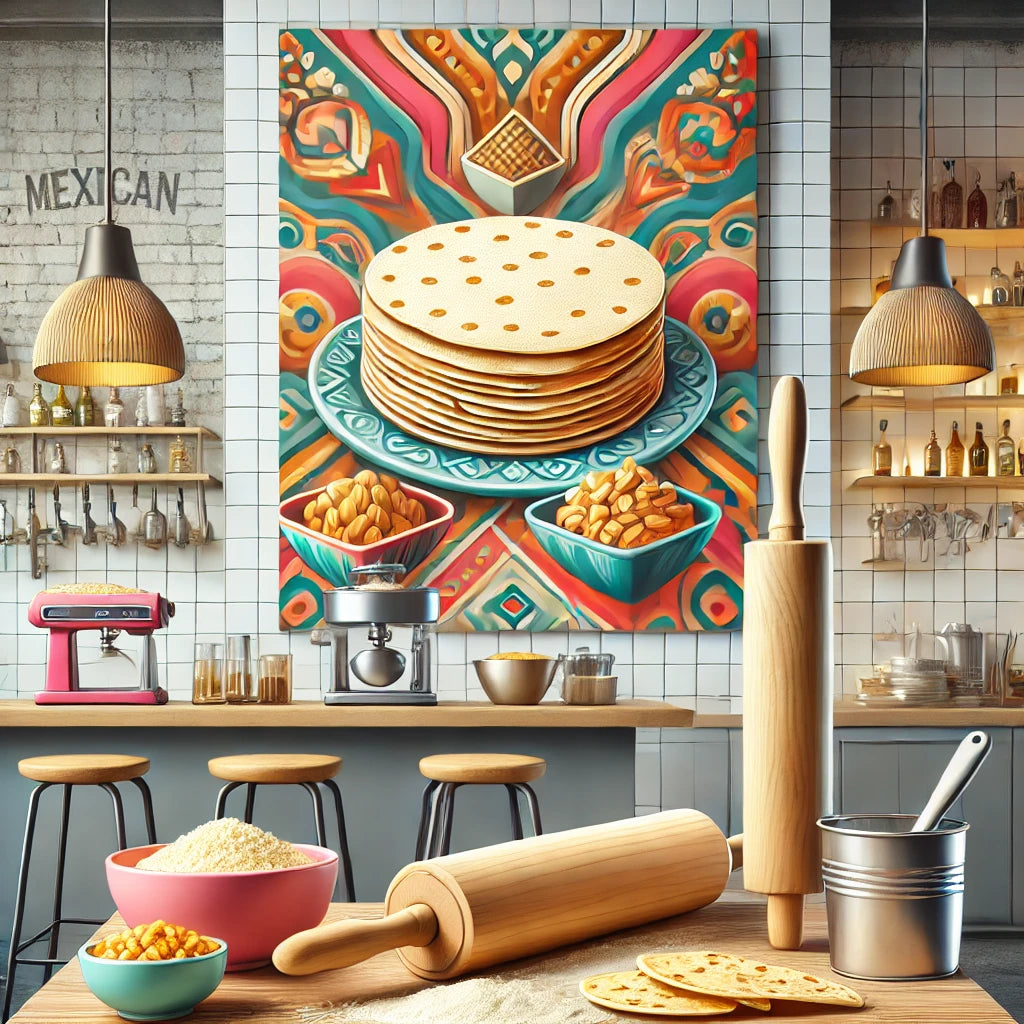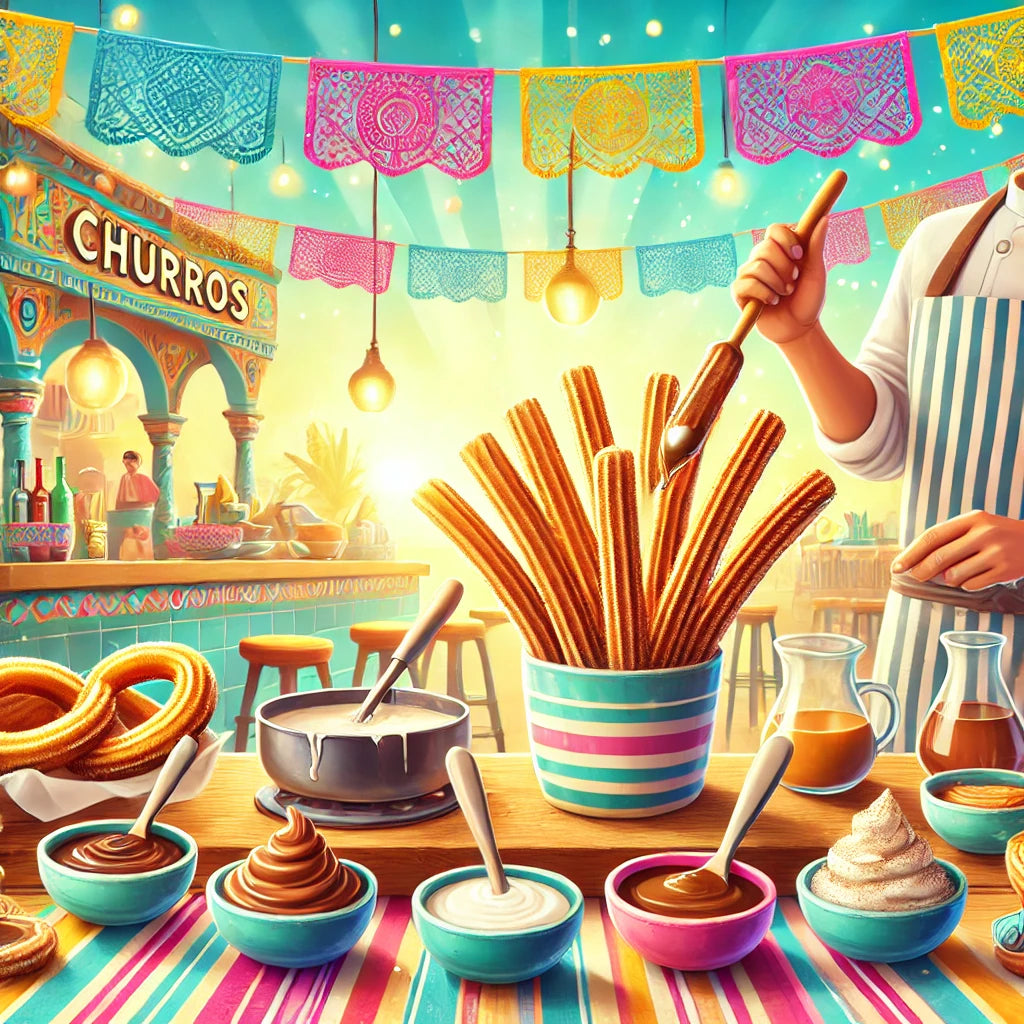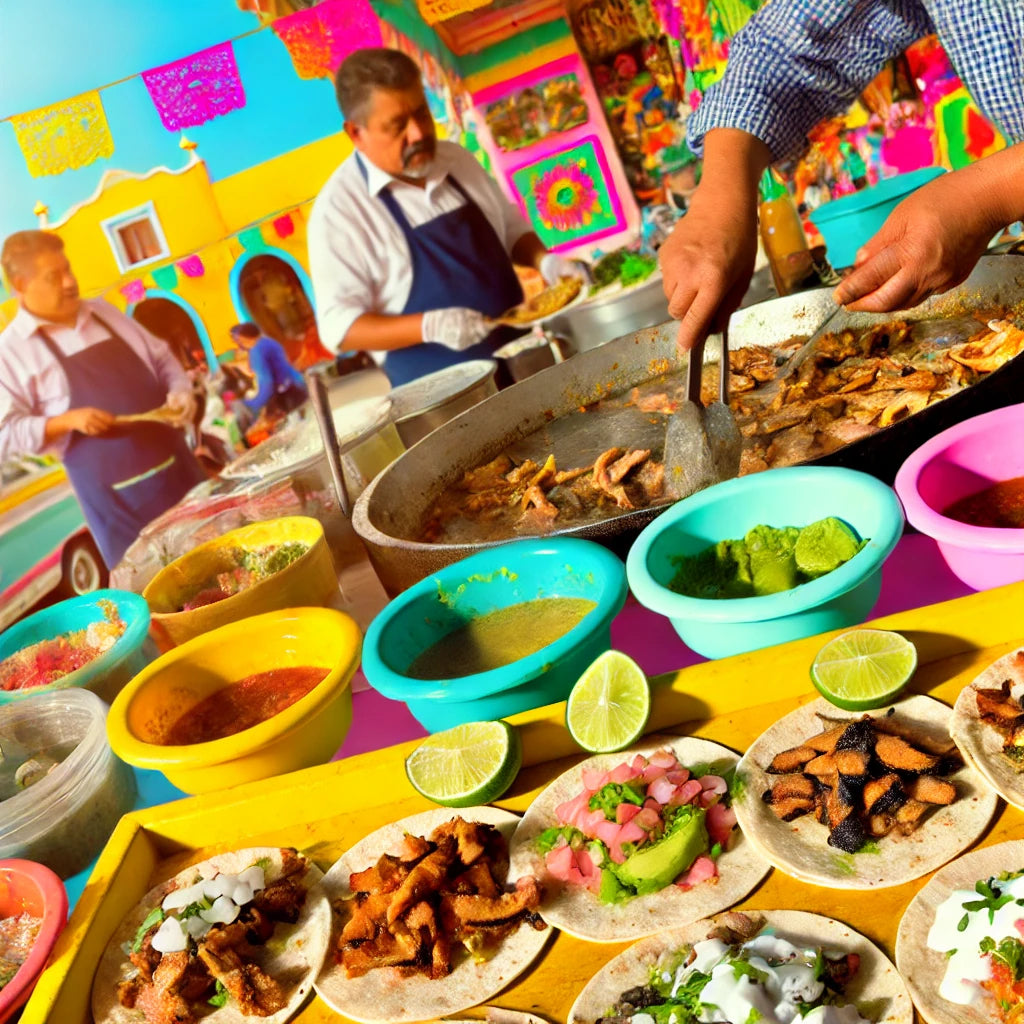
The Art of Homemade Tortillas: A Journey Through Latin America
Introduction to Homemade Tortillas
Welcome to Dirty D! I'm Manny Vides Jr., the proud founder and co-owner of this Mexican restaurant and today, I'm excited to take you on a culinary journey through the rich and diverse world of homemade tortillas.
Whether you're a fan of the classic corn tortilla or prefer the soft texture of flour tortillas, there's something magical about making them from scratch. Join me as we explore the historical context, the differences between corn and flour tortillas, and recipes from various Latin American countries.
Let's dive in!
The Historical Context of Tortillas
Tortillas have a deep-rooted history in Latin American cuisine, particularly in Mexico. Corn tortillas date back to ancient Mesoamerican civilizations like the Aztecs and the Mayans, who considered corn a sacred crop. The word "tortilla" itself comes from the Spanish word for "little cake," which the Spanish conquistadors coined when they encountered these flatbreads.
Flour tortillas, on the other hand, have a more recent history. They became popular in northern Mexico and the southwestern United States due to the availability of wheat flour brought by Spanish settlers. Today, both corn and flour tortillas are staples in Latin American cuisine, each with its own unique history and cultural significance.
Corn vs. Flour Tortillas
The choice between corn and flour tortillas often comes down to personal preference and the type of dish you're preparing. Let's break down the key differences:
Corn Tortillas
- Ingredients: Made from masa harina (corn flour) and water.
- Texture: Slightly thicker and more rustic in texture.
- Flavor: Earthy and slightly sweet, with a distinct corn taste.
- Uses: Ideal for tacos, enchiladas, tostadas, and more.
Flour Tortillas
- Ingredients: Made from wheat flour, water, fat (lard or vegetable oil), and a leavening agent like baking powder.
- Texture: Soft, pliable, and slightly chewy.
- Flavor: Milder than corn tortillas, with a subtle sweetness from the wheat.
- Uses: Perfect for burritos, quesadillas, wraps, and more.
Fresh vs. Store-Bought Tortillas
While store-bought tortillas are convenient, there's nothing quite like the taste and texture of fresh, homemade tortillas. Here's a quick comparison:
Fresh Homemade Tortillas
- Flavor: Richer and more authentic, with a fresh taste that can't be beaten.
- Texture: Softer and more pliable, perfect for folding and rolling.
- Customization: You can control the ingredients and adjust the recipe to your liking.
Store-Bought Tortillas
- Convenience: Ready to use, with no preparation required.
- Shelf Life: Longer shelf life due to preservatives.
- Consistency: Uniform size and thickness, but often lack the flavor and texture of fresh tortillas.
The Process of Making Homemade Tortillas
Making tortillas at home is easier than you might think. Here's a step-by-step guide to making both corn and flour tortillas from scratch:
Homemade Corn Tortillas
- Ingredients: 2 cups masa harina, 1 1/2 cups warm water, pinch of salt.
- Mix: In a bowl, combine the masa harina and salt. Gradually add the warm water, mixing until a dough forms. The dough should be soft but not sticky.
- Rest: Cover the dough with a damp cloth and let it rest for about 30 minutes.
- Shape: Divide the dough into small balls (about the size of a golf ball). Place a ball between two pieces of plastic wrap or wax paper and flatten it using a tortilla press or a heavy skillet.
- Cook: Heat a skillet or griddle over medium-high heat. Cook the tortillas for about 1-2 minutes on each side, until they have brown spots and are cooked through.
- Enjoy: Serve the tortillas warm, with your favorite fillings.
Homemade Flour Tortillas
- Ingredients: 2 cups all-purpose flour, 1/2 teaspoon baking powder, 1/2 teaspoon salt, 3 tablespoons lard or vegetable oil, 3/4 cup warm water.
- Mix: In a bowl, combine the flour, baking powder, and salt. Add the lard or oil and mix until the mixture resembles coarse crumbs. Gradually add the warm water, mixing until a dough forms.
- Rest: Cover the dough with a damp cloth and let it rest for about 30 minutes.
- Shape: Divide the dough into small balls. On a lightly floured surface, roll each ball into a thin circle using a rolling pin.
- Cook: Heat a skillet or griddle over medium-high heat. Cook the tortillas for about 1-2 minutes on each side, until they have brown spots and are cooked through.
- Enjoy: Serve the tortillas warm, with your favorite fillings.
Tortillas Across Latin America
Tortillas are a staple in many Latin American countries, each with its own unique twist on this beloved flatbread. Here are some examples:
Mexico: Corn Tortillas
In Mexico, corn tortillas are a fundamental part of daily life. They are used in a variety of dishes, from tacos and enchiladas to tostadas and chilaquiles. One popular recipe is tacos al pastor, which features marinated pork cooked on a spit and served on small corn tortillas with pineapple, onions, and cilantro.
Guatemala: Pupusas
In Guatemala, pupusas are a traditional dish made from corn tortillas filled with cheese, beans, and sometimes meat. They are cooked on a griddle and served with a side of curtido, a fermented cabbage slaw.
El Salvador: Pupusas
Similar to Guatemala, El Salvador is famous for its pupusas. These thick corn tortillas are stuffed with various fillings such as cheese, beans, pork, and loroco (a local edible flower). Pupusas are a national dish and a source of pride for Salvadorans.
Honduras: Baleadas
In Honduras, baleadas are a popular street food. They are made with thick flour tortillas and filled with refried beans, cheese, and crema (a type of sour cream). Additional toppings can include avocado, eggs, and meat.
Venezuela: Arepas
Arepas are a beloved dish in Venezuela. These round, thick corn tortillas are grilled, baked, or fried and then stuffed with a variety of fillings such as cheese, avocado, and shredded beef. Arepas are versatile and can be enjoyed for breakfast, lunch, or dinner.
Colombia: Arepas
Similar to Venezuela, Colombia also enjoys arepas. Colombian arepas are typically thinner and can be filled or topped with cheese, meats, or eggs. They are a common breakfast food and are often enjoyed with a hot cup of coffee.
Argentina: Tortillas de Rescate
In Argentina, tortillas de rescate are a traditional flatbread made from wheat flour. These tortillas are thicker than Mexican flour tortillas and are often used as a base for hearty fillings like meat, cheese, and vegetables.
FAQ About Tortillas
What are tortillas made of?
Tortillas are typically made from either corn or wheat flour. Corn tortillas are made from masa harina (corn flour) and water, while flour tortillas are made from wheat flour, water, fat (such as lard or vegetable oil), and a leavening agent like baking powder.
How are corn and flour tortillas different?
Corn tortillas have an earthy, slightly sweet flavor and a rustic texture. They are made from masa harina and water. Flour tortillas are softer, more pliable, and have a mild flavor. They are made from wheat flour, water, fat, and a leavening agent.
Can I make tortillas at home?
Yes, making tortillas at home is relatively easy and requires only a few basic ingredients. For corn tortillas, you need masa harina, water, and a pinch of salt. For flour tortillas, you need wheat flour, water, fat, and a leavening agent. The process involves mixing the ingredients into a dough, shaping the dough into balls, flattening them, and cooking them on a hot skillet or griddle.
How should I store homemade tortillas?
Homemade tortillas can be stored in an airtight container or a resealable plastic bag at room temperature for a day or two. For longer storage, keep them in the refrigerator for up to a week or in the freezer for up to three months. Reheat them on a skillet or in the microwave before serving.
What are some popular dishes made with tortillas?
Tortillas are incredibly versatile and can be used in a variety of dishes. Some popular recipes include tacos, enchiladas, burritos, quesadillas, tostadas, pupusas, baleadas, arepas, and more. They can be filled with meats, beans, cheese, vegetables, and various sauces.
Are tortillas gluten-free?
Corn tortillas are naturally gluten-free, as they are made from masa harina, which is ground corn. Flour tortillas, on the other hand, contain wheat flour and are not gluten-free. If you need gluten-free tortillas, opt for corn tortillas or look for specially made gluten-free flour tortillas.
What's the difference between fresh and store-bought tortillas?
Fresh homemade tortillas have a richer flavor and a softer, more pliable texture compared to store-bought tortillas. Store-bought tortillas are convenient and have a longer shelf life due to preservatives, but they often lack the authentic taste and texture of homemade tortillas.
Can I use tortillas for desserts?
Yes, tortillas can be used in desserts! One popular dessert is buñuelos, which are fried flour tortillas sprinkled with cinnamon and sugar. You can also make sweet quesadillas by filling tortillas with chocolate, fruit, or sweet spreads and grilling them until warm and gooey.


